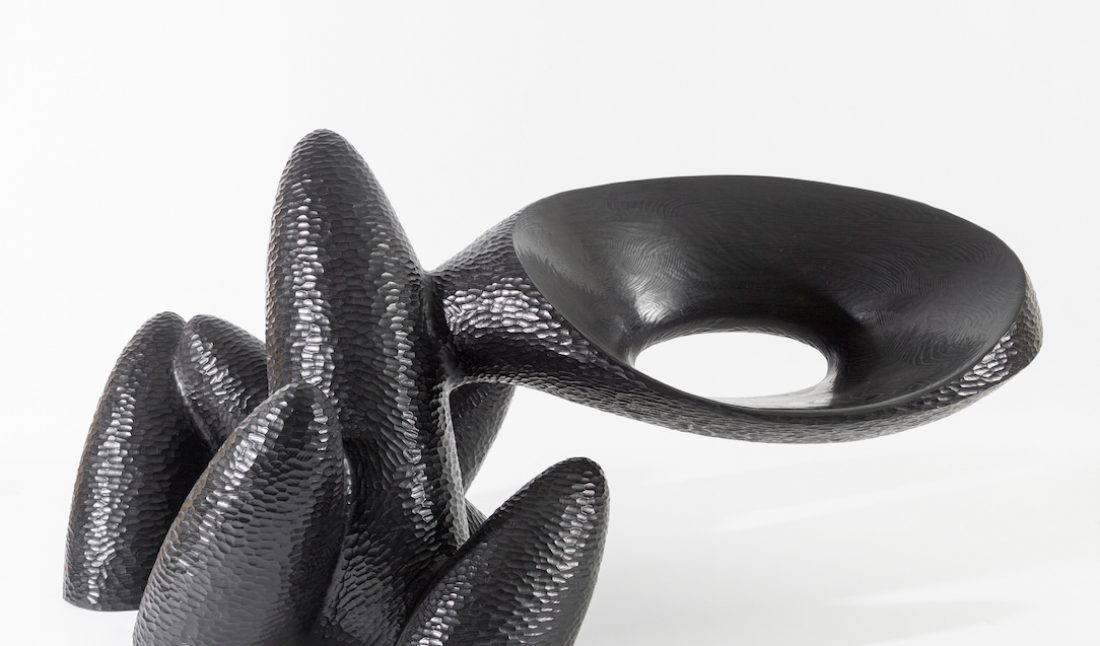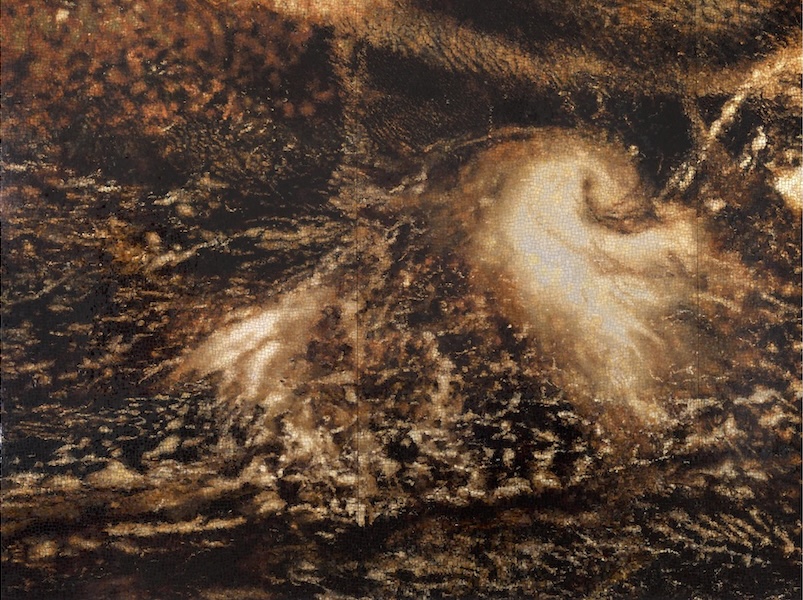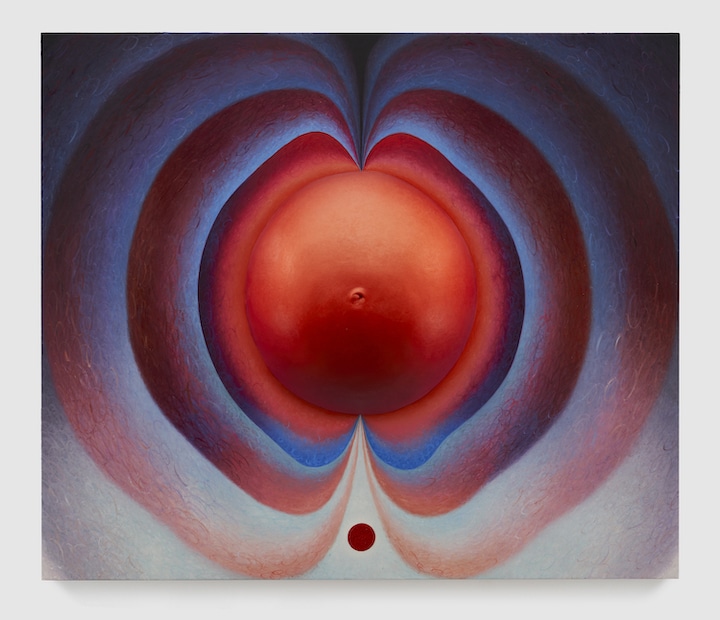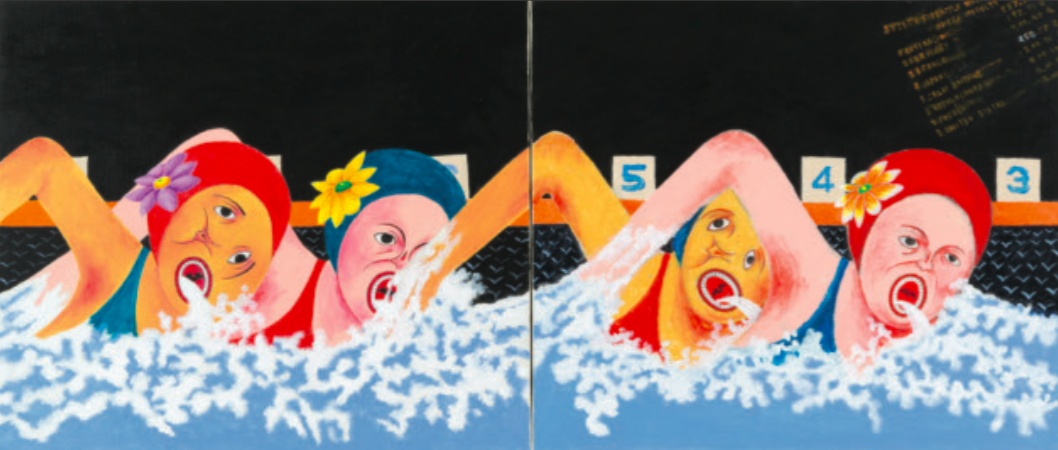Wendell Castle is more than a furniture designer. He would be better described as a sculptor. In fact, he originally wanted to be a sculptor, earning a degree in that concentration from the University of Kansas. Sitting with us in Chelsea, just a few weeks after his recent show at Friedman Benda, he told us, “I knew I wanted to be a sculptor and part of that decision was because it was a higher art form. But as I thought more and more about it, I wondered why was it a higher art form.” While he knew of many sculptors, he didn’t know of any furniture designers working with a sculptural approach. Castle decided to switch to making furniture, realizing, “I can be on top of the heap one day.”
His journey from making wood stack-laminated pieces in the sixties to using digital technology in his studio practice (including robots!) is the subject of an exhibition this fall at the Museum of Arts and Design, “Wendell Castle Remastered” (October 20, 2015, to February 28, 2016). Whitewall spoke with Castle about how his process has changed, and how his own digital remastering has blown the possibilities of what he can create way, way up.
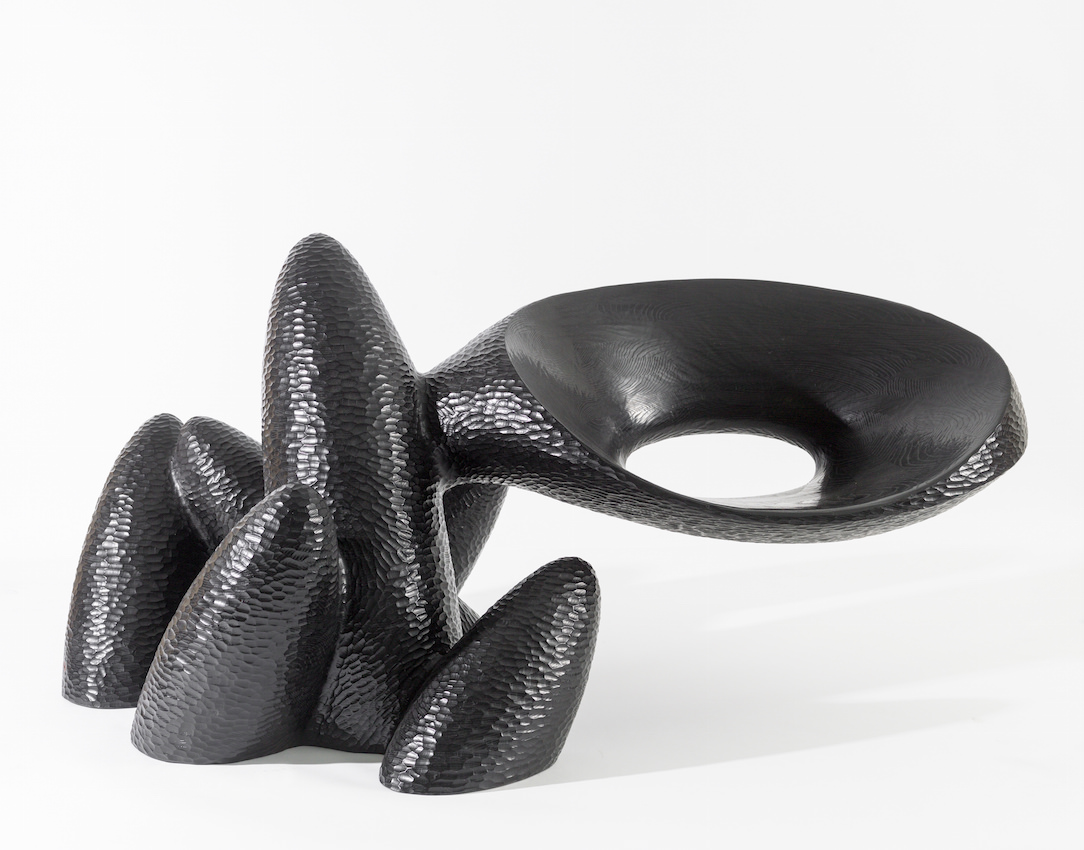 Courtesy of Friedman Benda
Courtesy of Friedman Benda
WHITEWALL: You’ll have a retrospective of sorts at the Museum of Arts and Design in New York this fall. I say “of sorts,” because curator Ron Labaco has chosen historic works by you that you’ll “respond to” using handcrafted furniture making techniques and 3D scanning and modeling and computer-controlled milling. Can you tell us about where the idea for the concept came from?
WENDELL CASTLE: It has to do with the museum’s philosophy. They love that kind of thing. They have been talking to me for a number of years trying to do a show. They don’t have a plain, one-man show. There is a reason, a theme, a direction, something. So they would show some of my early work and then I would make new pieces that would show what technology has done in the process, and show how the vocabulary has changed, and show how the whole scene has changed so much.
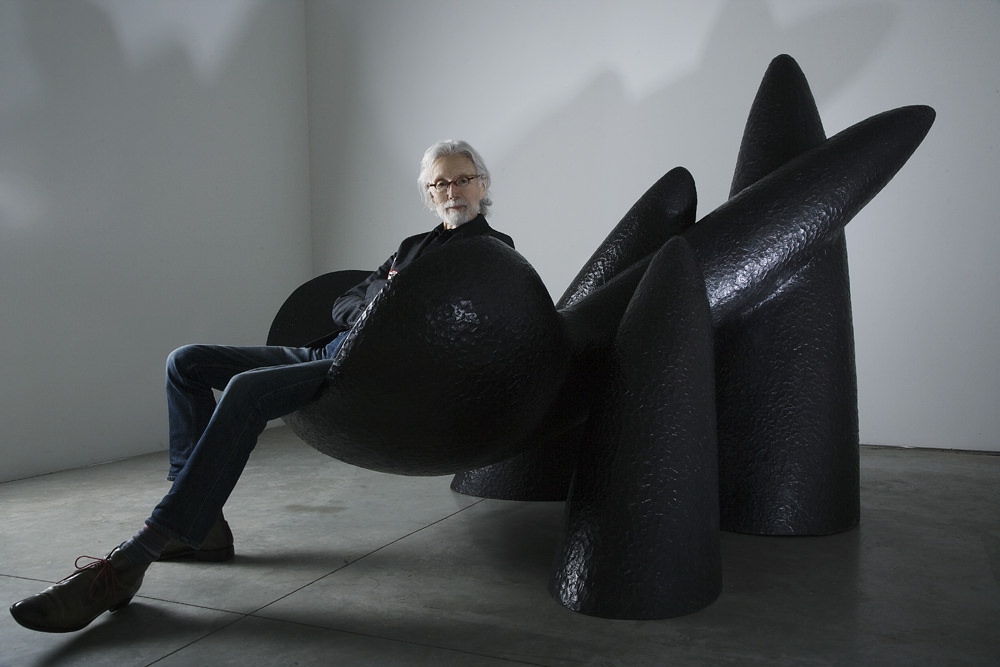 Photo by Steve Benisty
Photo by Steve Benisty
The way I make things with lamination was a very liberating process, and I really could work like a sculptor—that was my first breakthrough. But then I first had to, from my sketches, interpret that and sometimes I would make a 3-D model, but the 3-D models weren’t very much help. What I had to do in my head was imagine cross-sections in the piece and how they would change at different levels. You had to keep it fairly simple. And the big areas would be hollow, both for just saving the weight but also dimensionally stable.
WW: You’re referring to your stack-lamination process, a technique of your own invention where you stacked different cross-sections of wood to create more sculptural furniture that couldn’t otherwise have been created.
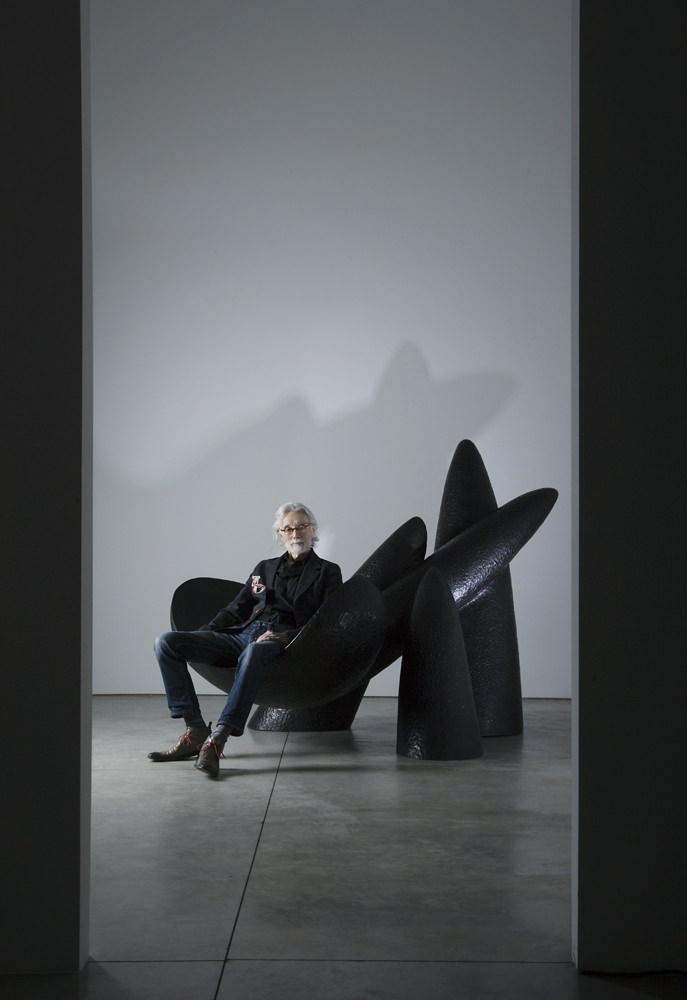 Photo by Steve Benisty
Photo by Steve Benisty
WC: Yes, the vocabulary is very organic. There were some limitations. Like, a terribly ambitious piece that will be very big, and going to take two hundred to three hundred hours, would have been out of the question in the sixties. And there wouldn’t be anybody who is willing to pay that much. So the market was so different back then, and the thought about making a piece 20 feet high just didn’t even occur to me. The mind and the sensibility and sort of what you hope to accomplish all go together, and I hope that they still do.
WW: When did you start working with digital techniques?
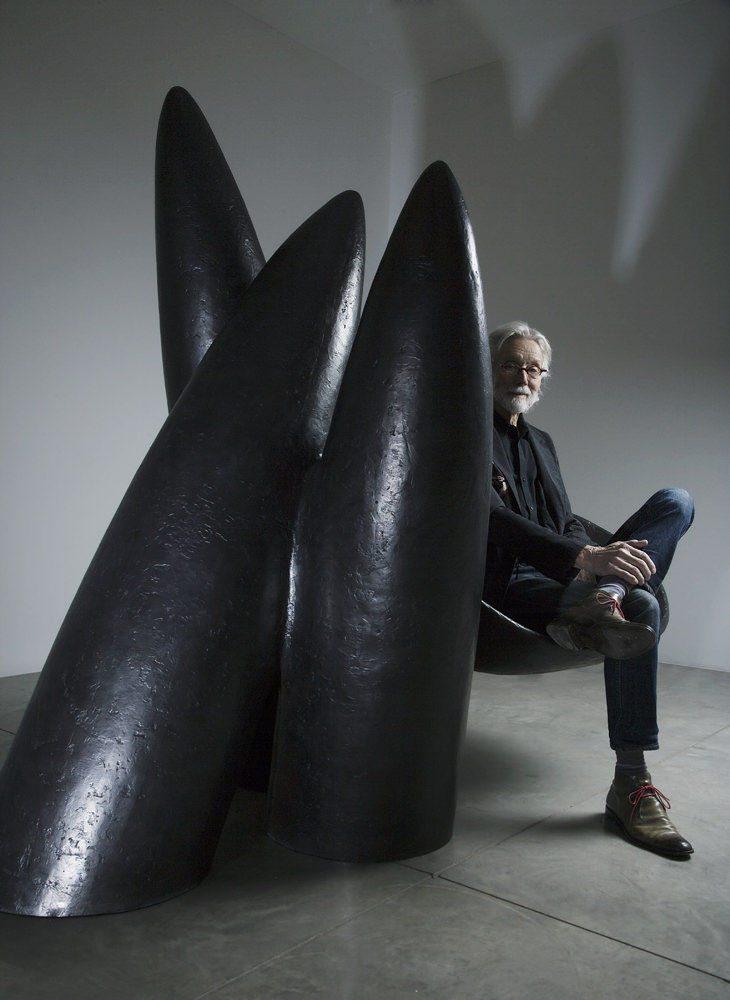 Photo by Steve Benisty
Photo by Steve Benisty
WC: Starting exactly five years ago, we got a robot. So we really have been in the digital age. We have done it gradually.
WW: Were you at all reluctant to transition to working with 3-D scanning, models, and a robot?
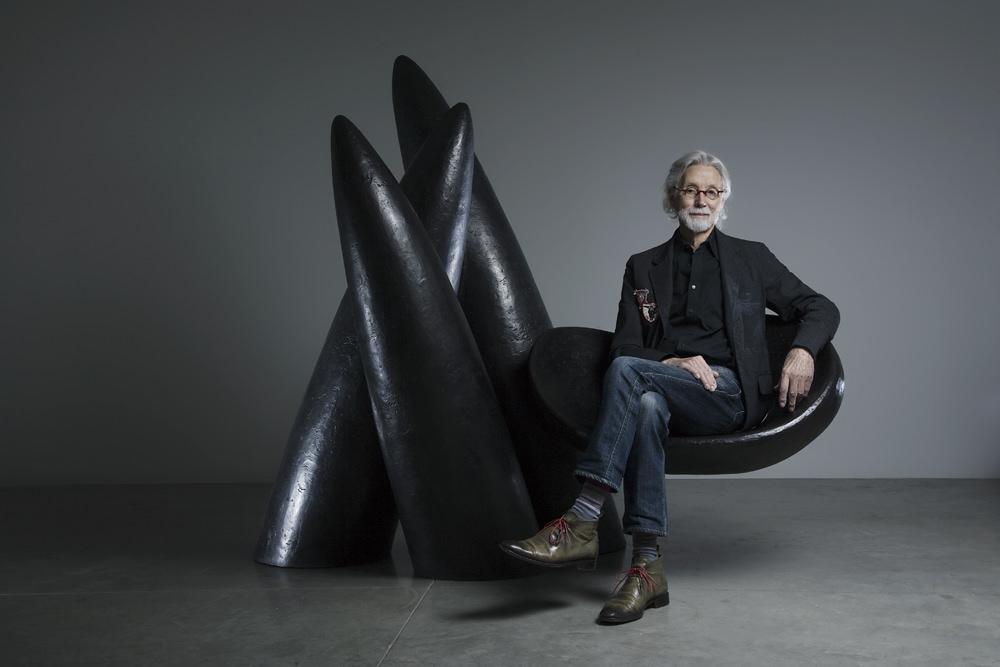 Photo by Steve Benisty
Photo by Steve Benisty
WC: Well, I didn’t want to do what was traditionally done. What it means when you enter the digital age is that you work up your designs on the computer, and that is not what I wanted to do. That is where the reluctance came from.
To me it is not as direct a process like pencil on paper is, and so I think pencil and paper is more friendly and I have been doing it for a long time. I know that I’m pretty good at drawing and I’m so comfortable. But we figured out with a good assistant, who is an engineer and who does programming [we could do it].
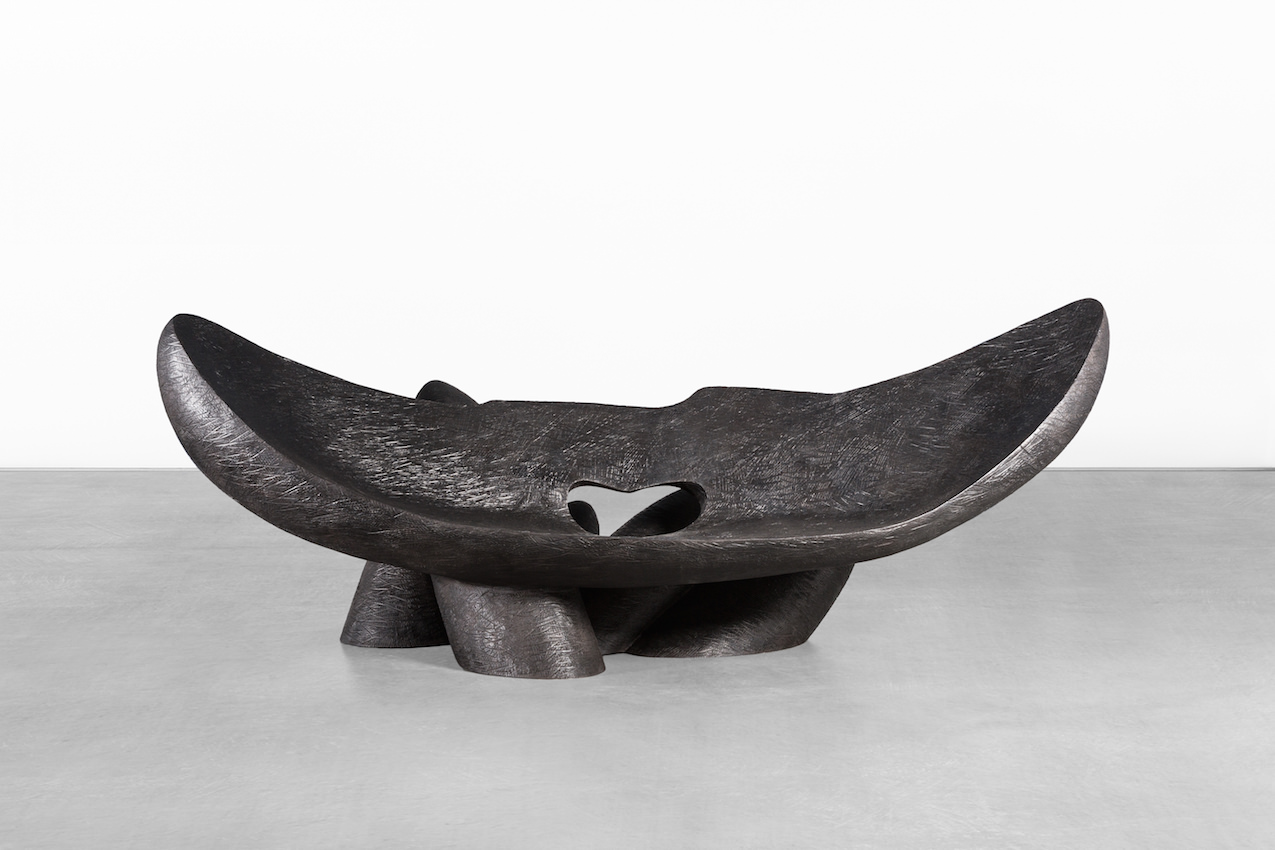 Courtesy of Friedman Benda
Courtesy of Friedman Benda
WW: Where did you start?
WC: With an intermediate step, which was to build a scale model. When I first built the models, they weren’t very big and when we blew them up, we lost things. It wasn’t working very well, so we had to start making the model much bigger. Then it worked great and we would scan them and then we would print them, and we can correct them on the computer if we wanted to. We can look at it upside down or all around, and if you see something that you wanted to tweak, you could do it. That allows you to make any size of that piece that you want.
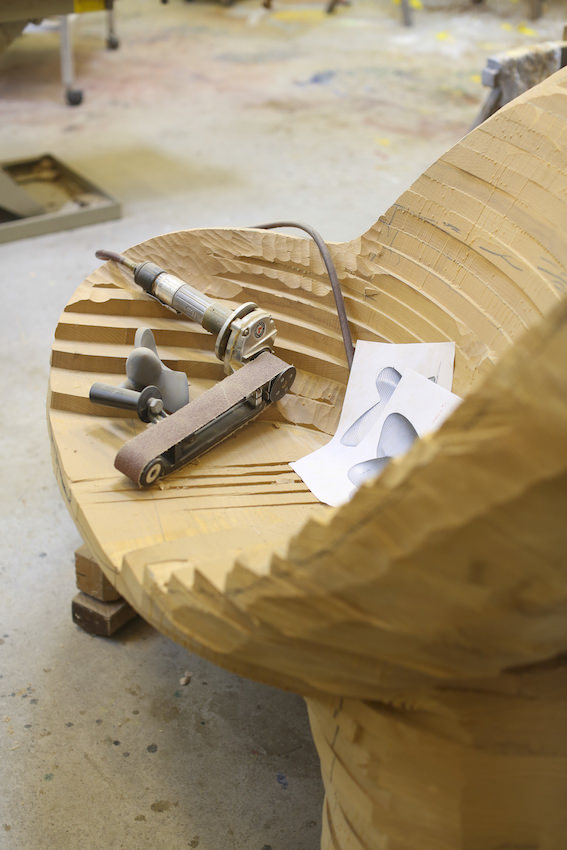 Courtesy of the artist and MAD
Courtesy of the artist and MAD
And now the laminating has become more accurate and the carving blind anymore because we know where the other side is.
WW: That must have been so freeing and exciting, and maybe allowed for your pieces to become even more sculptural?
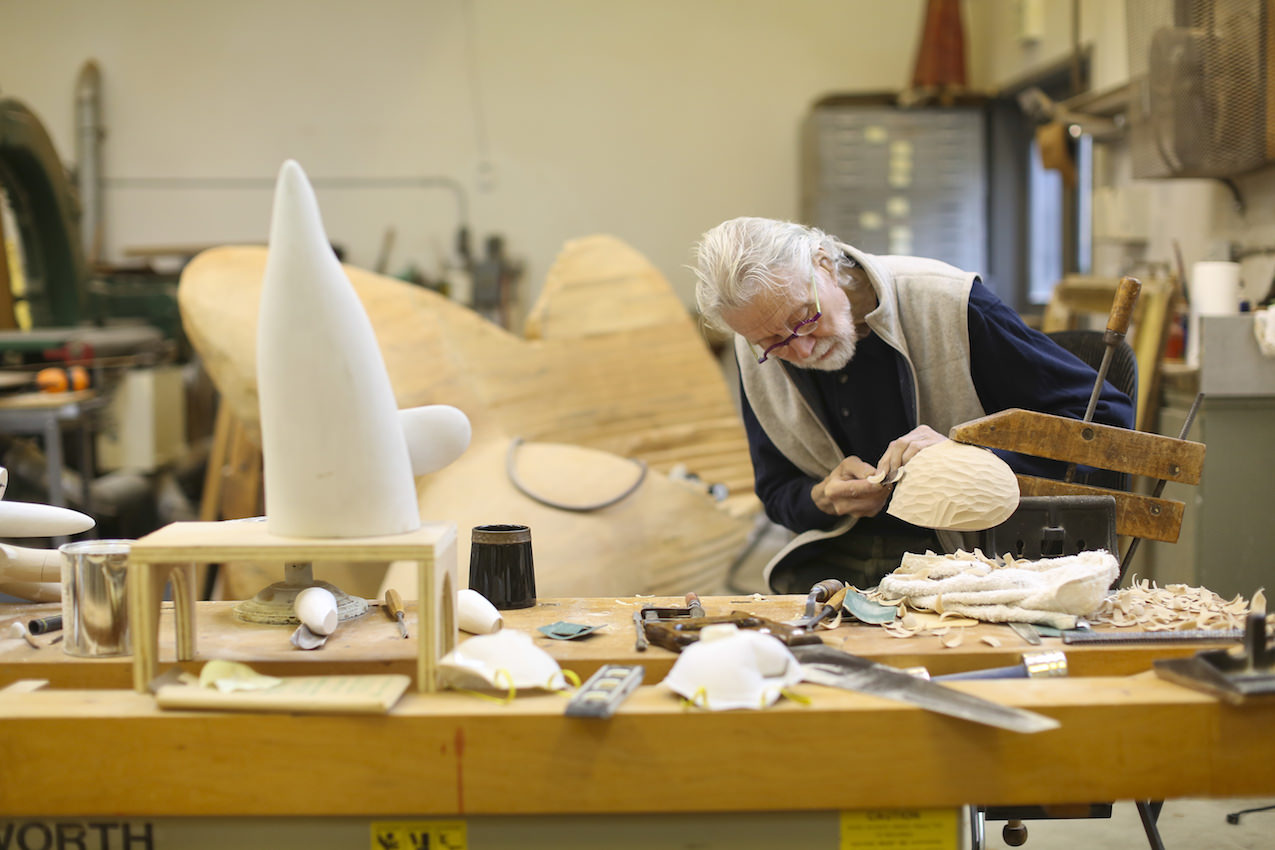 Courtesy of the artist and MAD
Courtesy of the artist and MAD
WC: Yeah, I can make a pretty complicated model in two days, and that is very fulfilling. The next step in the process is that we have purchased a big ABB robot, the type that you would see on the assembly line in Detroit. They are painted orange and they are the biggest manufacturer of robots in the world. We bought one of those and it took my guy about a year to program it. And now we are doing really cool things with it.
WW: Like what?
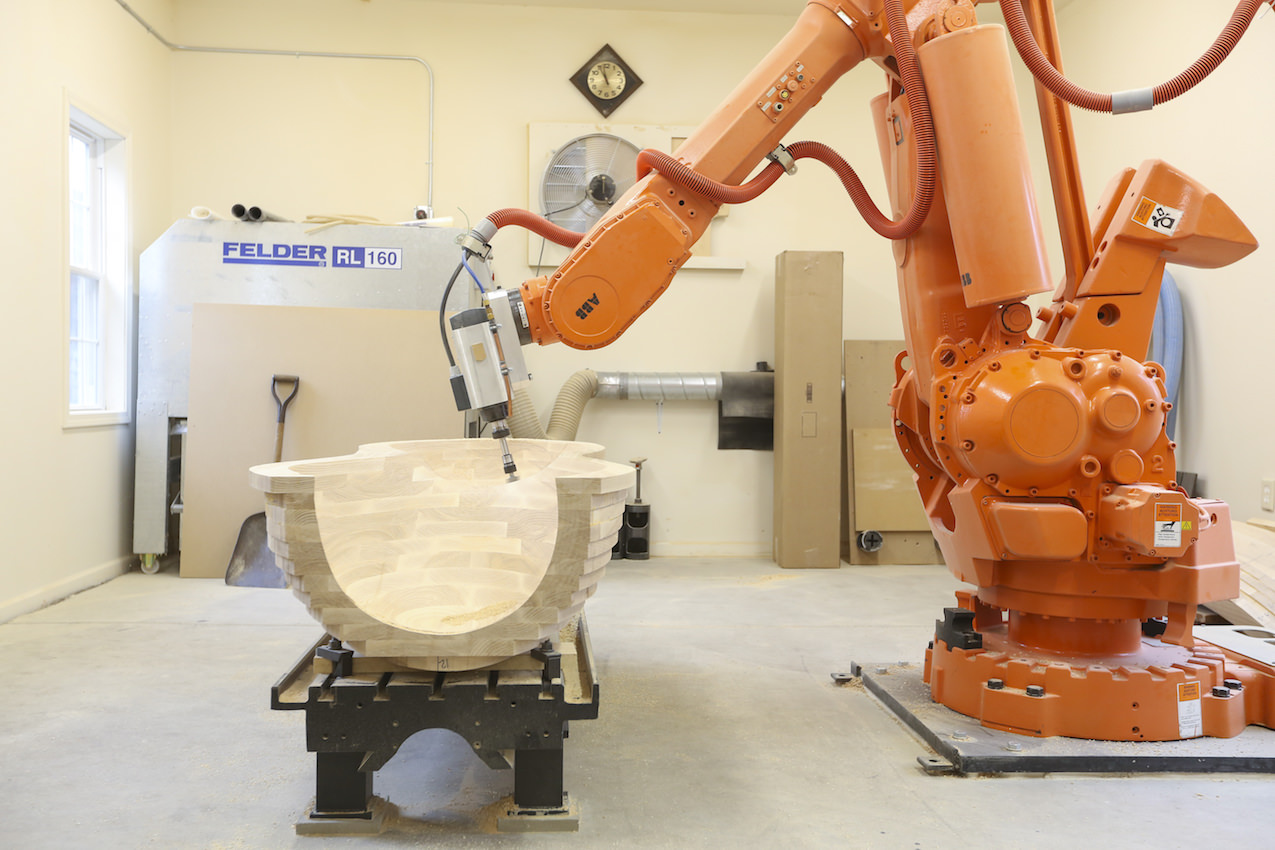 Courtesy of the artist and MAD
Courtesy of the artist and MAD
WC: Some of the obvious things are that we are making a multiple of one thing, so we will start with an edition of eight. That’s a really nice thing to do on the computer because it would have been fun making the first one. By the second one, you start to get tired of it, and by the third one you’re like, “I’m sick of this.” So now we avoid all that and edition pieces go on.
One of the problems in making big things is that they won’t go through a door or get into an elevator. So those are important considerations. The next thing I figured out is how to make these things come apart without one knowing it. That is one of things that we can do with the help of the robot.
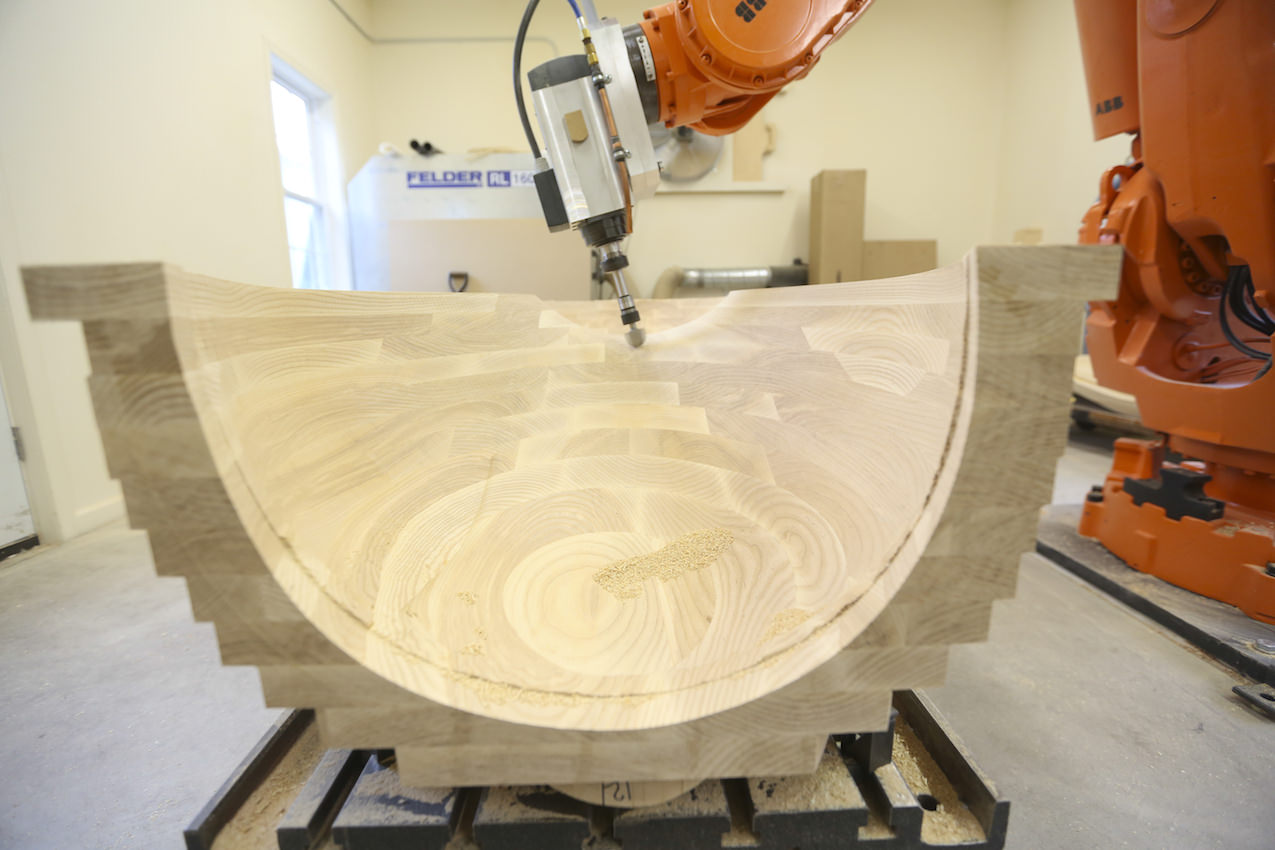 Courtesy of the artist and MAD
Courtesy of the artist and MAD
WW: At the beginning of 2013, you had a wild installation at Friedman Benda gallery in New York called “A New Environment” and it was very tall, had multiple levels of seating, and a spiral staircase that was almost like a treehouse. Did the robot help you with that?
WC: No, we hadn’t figured it out yet.
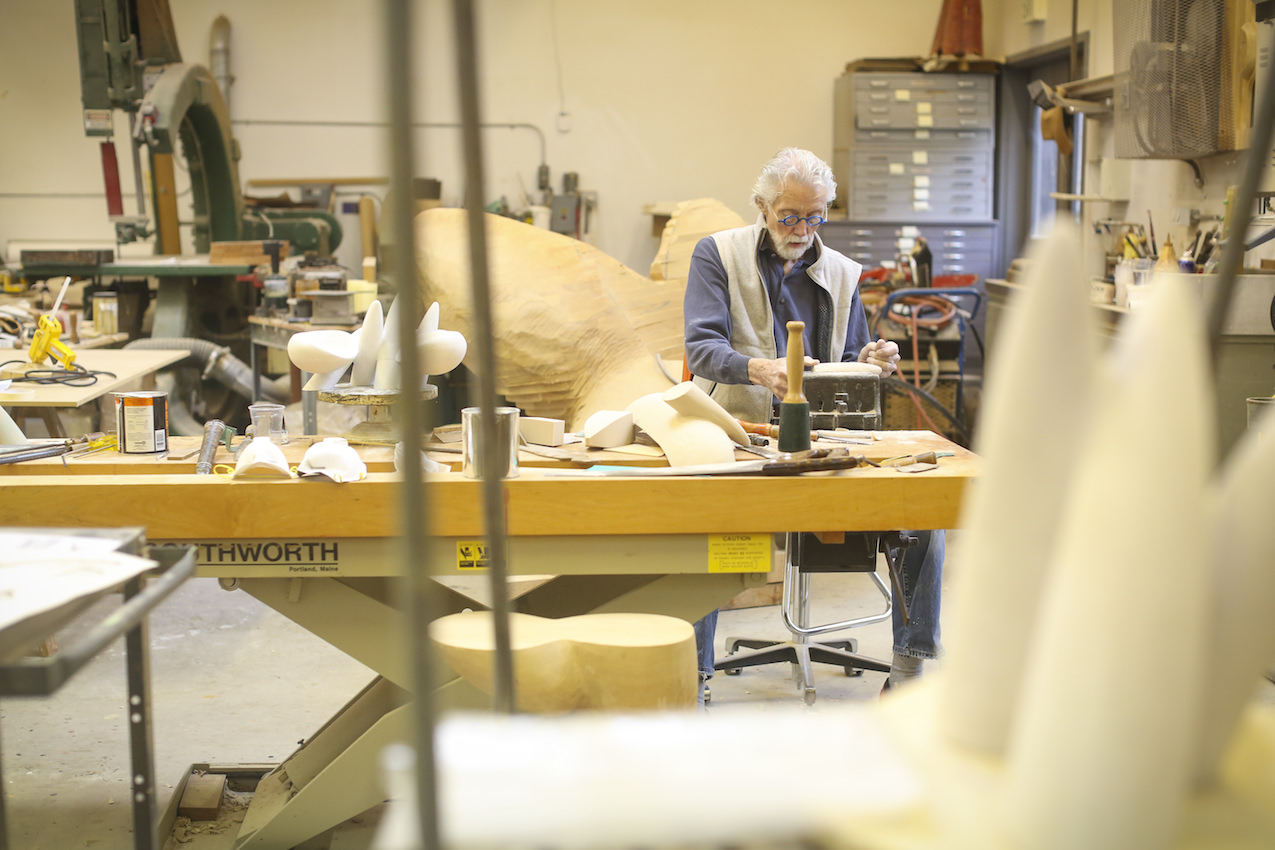 Courtesy of the artist and MAD
Courtesy of the artist and MAD
WW: So how did you accomplish that installation?
WC: It came apart, but in a pretty awkward way. But for a couple of pieces that I had in the show that closed a few weeks ago [“Gathering Momentum” at Friedman Benda, April 1 to May 30], there was one that was a really good example of that. The tallest part was about seven feet. I’m planning some things that are bigger.
One thing that I’ve been thinking about, and it doesn’t fit any of the current exhibits, but to make a piece of furniture that fills an entire room. Or maybe several chairs, table, maybe a cabinet—all filling one big room.
WW: For the MAD show? Do you know yet what you’ll make for it, or the historic works you’ll be responding to?
WC: Well, there are few that are very direct. There will be a dining room table, the one that I made in the late sixties and it has a hole in the middle. It is the first table that I made with a hole in the middle, and my reasoning for that at that time was basically because it was sculpture. There will be a piece in the show that is a cabinet that I made in the sixties, and it is peanut-shaped that has a chair attached. And my very first two-seater. So [the new work] will certainly bigger, but the vocabulary is very different.
WW: The recent exhibition “Gathering Momentum” that you mentioned, in terms of the vocabulary that you are using now, those works had very wide bases. They felt very grounded. Can you tell me a little bit about how you came up with that shape?
WC: They are somewhat related to the first pieces that were kind of podlike, so then I decided that I’m really going to stretch it. I think it is a very organic idea that a pod is like a seed, and it is growing, and the chair or the table is a blossom.
It really is about having so much fun. It is unbelievable that I can make these totally impossible pieces of furniture. The seats are comfortable—they are going to sit just fine—but they take a great amount of floor space. For a chair you design with a framework of things, but I am completely liberated. It doesn’t really matter how much space it takes up.
WW: Have you tried to find that freedom in your practice since the start? Your works always have been more sculptural than terribly practical.
WC: I have always tried to. But there were some times I was forced to be more practical, in order to make more sales, but I have always wanted it this way. It took a long time to get there, but it is nice to be free of those normal considerations that most people will think that you design a chair that you have to take an account. I am involved with an industrial design department at the Rochester Institute of Technology, and I teach a class now and then. And I tell the students about these other ways furniture is made, like what Ron Arad has done. It is against everything else that they are taught. There is another way to go, but it is not easy to get there.
This article is in Whitewall‘s fall 2015 Fashion Issue, out this month.






